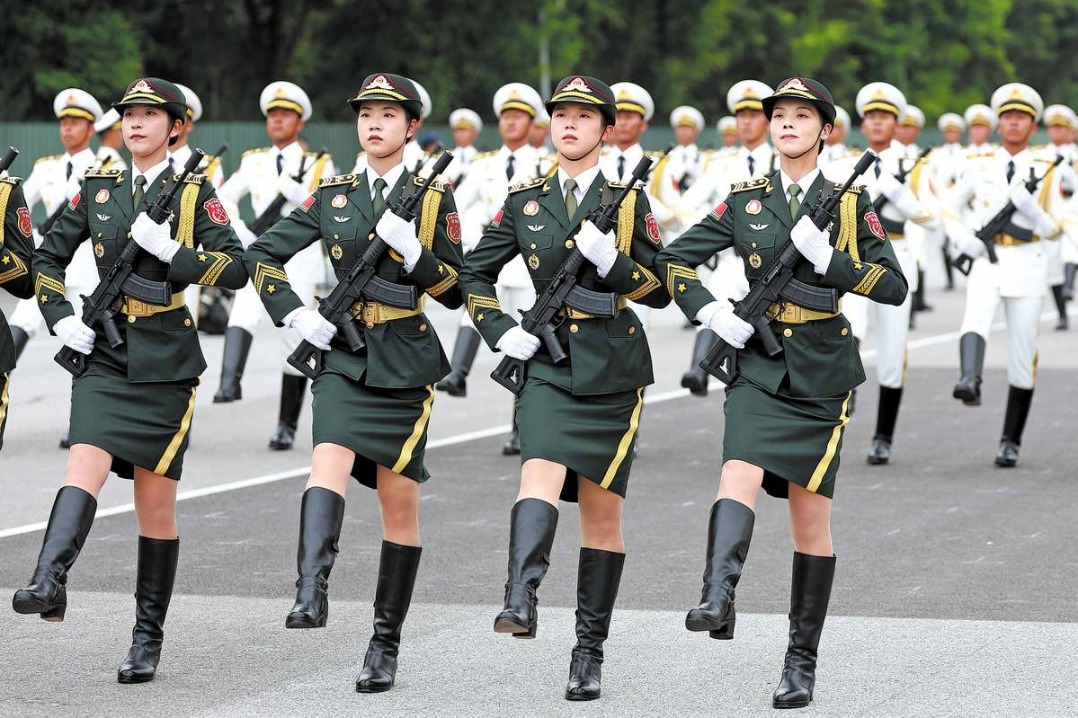China will continue to back Confucius Institutes in Africa

Editor's note: This article is part of the Preview Policy Report for the 2018 Beijing Summit of the Forum on China-Africa Cooperation, to be published by China Watch, China Daily's think tank.
According to the Chinese Language Council, or Hanban, there are currently some 54 Confucius Institutes in Africa – the same number as there are countries in the African continent. Most of these CIs are based in universities or colleges. There is a smaller number of Confucius Classrooms in the continent according to Hanban – 27 in total. The latter mostly operate at the secondary school level but also in a variety of other language-promotion institutions. At the 2015 FOCAC Summit in Johannesburg, the agreed Framework for Action underlined that “The Chinese side… will support more African countries in their efforts to establish Confucius Institutes and Confucius Classrooms”.
What can be said about the spread of Confucius Institutes in Africa since the first opened in the University of Nairobi in 2005? And what can be concluded about the patterns of the spread in Africa of these two institutions, the CIs and the CCs, compared to their spread in North America, Europe, Asia and Oceania?
The fact that there are around 50 Confucius Institutes in Africa does not mean that there is one CI for each African country. Far from it. Only some 33 African countries have CIs, but the total comes to about 50 since countries such as South Africa have five, and Kenya four. In other words, about 20 countries in the continent don’t yet have a Confucius Institute.
What about Confucius Classrooms? Again, according to Hanban data, there are some 27 Confucius Classrooms in Africa, but they are to be found in only 15 countries. Again, the distribution is uneven, since Ethiopia and South Africa have five each, and Egypt has three. So only three countries account for half the CCs in the continent. Thus, the great majority of African countries don’t have Confucius Classrooms.
How does the pattern of the spread of CIs and CCs differ in Africa from other regions of the world? There are some very remarkable differences.
To start with the US, there are twice as many CIs in the country (110) than in the whole of Africa (54). Equally surprising, there are almost five times as many Confucius Classrooms in the US (501) as there are CIs. Similar contrasts between CC and CI numbers can be seen for Canada: 12 to 35; UK: 29 to 148; and Australia: 14 to 67.
Why is it apparently more attractive for schools in the US, the UK, Canada, and Australia to encourage the teaching of Chinese through Confucius Classrooms, and to gain a Chinese partner school in the process, than it is in Africa? It is almost certainly not an issue of finance for the support of Chinese teaching in the CC as the Chinese authorities make it very attractive to develop a Confucius Classroom. But finance may be an issue when it comes to parents contributing to the costs of their children’s visits to the partner schools in China. What other reasons may there be for schools in Africa not taking advantage of this partnership opportunity?
There have been few, if any, criticisms or controversies about the presence of CIs and CCs in Africa. By contrast, there have been a small number of vocal criticisms of CIs in the US, notably in relation to the closure of the CI in the University of Chicago, and to a lesser extent in Canada and Europe.
What is particularly intriguing about the US criticism of the CIs for infringing on academic freedom and promoting Chinese propaganda in the US is that so little of this attaches to the Confucius Classrooms. And yet there are some 500 CCs in the US. If the CCs were actually being used for propaganda purposes, there would have been an outcry. There would be more concern at the secondary-school level than at university, as pupils of secondary-school age might be thought more impressionable. Yet there is no sign of such a reaction in relation to the 27 Confucius Classrooms in Africa, and the situation is not very different in the US or Europe.
One of the greatest attractions of the CI and CC programs is the chance to visit China for a short period – often to the partner school or university for two weeks. But equally or more important for the sustainability of both programs is the determination of Hanban to offer opportunities to study the teaching of Chinese as a second language in China. It is of course extraordinary that in 2017, there were some 3,500 teachers of Chinese sent from China worldwide, and over 6,000 volunteers who would normally be sent from China to support the teaching of Chinese in CIs and CCs. But arguably more critical than these Chinese teachers and volunteers is the rapid creation of a cadre of local teachers of Chinese, whether in Africa, North America or Europe. This is proceeding apace, and is being encouraged by the offer of a whole series of CI fellowships to study in China.
Implications for 2018 FOCAC Summit
As each FOCAC approaches, commentators have always wondered: Will it really be possible for China to keep increasing the number of long- and short-term scholarships and training awards for Africa? It has always done so.
Today, when so many nations have turned their foreign and trade policies toward “my country first”, it will be a particular challenge for China to maintain its strong commitment, not least when there are all the demands of the Belt and Road Initiative. However, China has not been just a fair weather friend for Africa. So my money would still be on China continuing to encourage both Confucius Institutes as well as Confucius Classrooms, and on continuing to encourage more scholars and trainees to learn from and with China.
Kenneth King is emeritus professor of the University of Edinburgh. The author contributed this article to China Watch exclusively. The views expressed do not necessarily reflect those of China Watch.
All rights reserved. Copying or sharing of any content for other than personal use is prohibited without prior written permission.

































